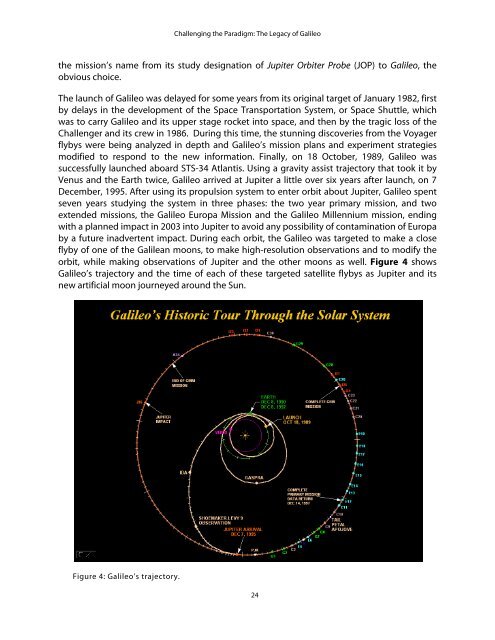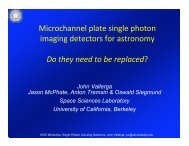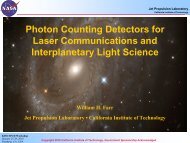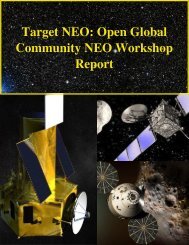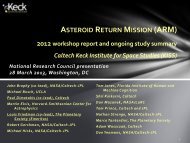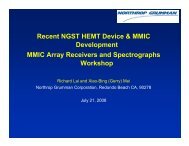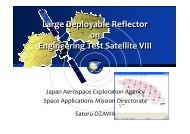The Legacy of Galileo - Keck Institute for Space Studies - Caltech
The Legacy of Galileo - Keck Institute for Space Studies - Caltech
The Legacy of Galileo - Keck Institute for Space Studies - Caltech
You also want an ePaper? Increase the reach of your titles
YUMPU automatically turns print PDFs into web optimized ePapers that Google loves.
Challenging the Paradigm: <strong>The</strong> <strong>Legacy</strong> <strong>of</strong> <strong>Galileo</strong><br />
the mission’s name from its study designation <strong>of</strong> Jupiter Orbiter Probe (JOP) to <strong>Galileo</strong>, the<br />
obvious choice.<br />
<strong>The</strong> launch <strong>of</strong> <strong>Galileo</strong> was delayed <strong>for</strong> some years from its original target <strong>of</strong> January 1982, first<br />
by delays in the development <strong>of</strong> the <strong>Space</strong> Transportation System, or <strong>Space</strong> Shuttle, which<br />
was to carry <strong>Galileo</strong> and its upper stage rocket into space, and then by the tragic loss <strong>of</strong> the<br />
Challenger and its crew in 1986. During this time, the stunning discoveries from the Voyager<br />
flybys were being analyzed in depth and <strong>Galileo</strong>’s mission plans and experiment strategies<br />
modified to respond to the new in<strong>for</strong>mation. Finally, on 18 October, 1989, <strong>Galileo</strong> was<br />
successfully launched aboard STS-34 Atlantis. Using a gravity assist trajectory that took it by<br />
Venus and the Earth twice, <strong>Galileo</strong> arrived at Jupiter a little over six years after launch, on 7<br />
December, 1995. After using its propulsion system to enter orbit about Jupiter, <strong>Galileo</strong> spent<br />
seven years studying the system in three phases: the two year primary mission, and two<br />
extended missions, the <strong>Galileo</strong> Europa Mission and the <strong>Galileo</strong> Millennium mission, ending<br />
with a planned impact in 2003 into Jupiter to avoid any possibility <strong>of</strong> contamination <strong>of</strong> Europa<br />
by a future inadvertent impact. During each orbit, the <strong>Galileo</strong> was targeted to make a close<br />
flyby <strong>of</strong> one <strong>of</strong> the Galilean moons, to make high-resolution observations and to modify the<br />
orbit, while making observations <strong>of</strong> Jupiter and the other moons as well. Figure 4 shows<br />
<strong>Galileo</strong>’s trajectory and the time <strong>of</strong> each <strong>of</strong> these targeted satellite flybys as Jupiter and its<br />
new artificial moon journeyed around the Sun.<br />
Figure 4: <strong>Galileo</strong>’s trajectory.<br />
24


